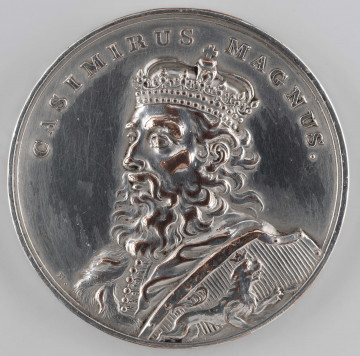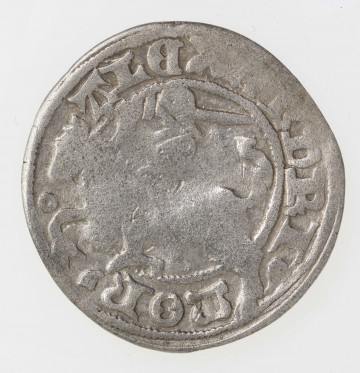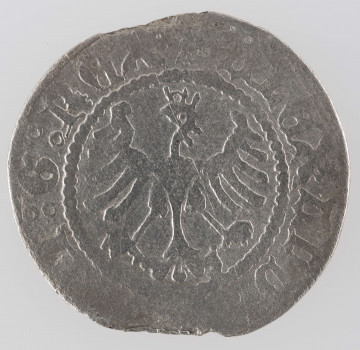
Casimir the Great - royal entourage
1780 — 1792
National Museum in Lublin
Part of the collection: Money on Polish territory in the Middle Ages
The work of reforming the Polish monetary system, begun by Władysław the Short, was taken up by Casimir the Great. On the one hand, it was to be a unifying factor for the Polish lands after the period of regional disintegration, and on the other, it was to manifest the position of the Polish ruler on the European arena. Preparations for the reform took a long time. It was to be an expression of a kind of political programme of Casimir the Great, expressed already in the Statutes of Greater Poland (Wielkopolska). In the King's view, Poland was to become a country ruled by one monarch, with one law and one coin in circulation. The last postulate was not introduced until the end of the monarch's reign. The basis of the monetary system was ‘skojec’, which was purely a unit of account, not reflected in the coinage. Its value corresponded to two grosze, which were divided into two quarters called big ones, or half-penny. In turn, half-pennies were equal to two quarter-pennies, i.e., small quarter-pennies, or half-quarter-pennies. Common coins were represented by denars and obols. The former constituted 1/16th and the latter 1/32nd of a penny. The use of the penny system was a conscious reference to the relations prevailing in Bohemia. However, in contrast to our southern neighbour, who sourced silver from the mines in Kutná Hora, shortages of domestic silver ore had a significant impact on the issue of Polish coins. They limited the production of grosz, which contained the highest amount of silver. In case of half-pennies, the bullion content was reduced, which resulted in a loss of their value. The first mention of half-penny dates to 1367. Soon after, its real value dropped from 1/2 to 1/3rd of a penny. Half-pennies were minted in Kraków, Poznań and possibly Kalisz. There are two basic types, differing in the drawing on the obverse. In both cases the obverse depicted the King sitting on a throne. In the first type, the ruler held the royal apple in his outstretched right hand, in the second the apple was in the hand and held at the breast. The weight of the half-pennies was different. It varied from less than 1 to slightly more than 2 grams, which, on the one hand, explains the gradual loss of value, on the other, shows the difficulty in maintaining a uniform standard of the minted coin.
The presented coin is of the second type.
Leszek Poniewozik
Author / creator
Dimensions
cały obiekt:
Object type
numismatic
Technique
stamp minting
Material
silver
Creation time / dating
Creation / finding place
Owner
The National Museum in Lublin
Identification number
Location / status

1780 — 1792
National Museum in Lublin

1492 — 1506
National Museum in Lublin

1502 — 1506
National Museum in Lublin
DISCOVER this TOPIC
Museum of King Jan III's Palace at Wilanów
DISCOVER this PATH
Educational path